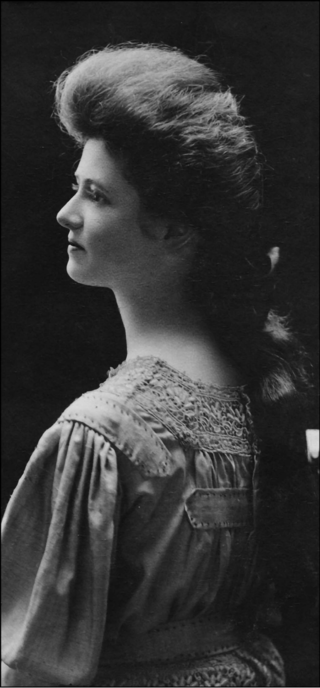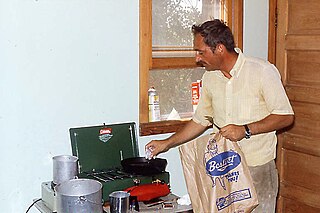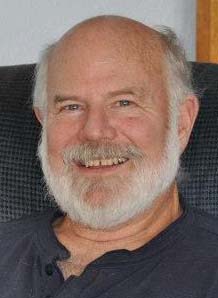
Herpetology is the branch of zoology concerned with the study of amphibians and reptiles. Birds, which are cladistically included within Reptilia, are traditionally excluded here; the scientific study of birds is the subject of ornithology.

Leonhard Hess Stejneger was a Norwegian-born American ornithologist, herpetologist and zoologist. Stejneger specialized in vertebrate natural history studies. He gained his greatest reputation with reptiles and amphibians.

Rufus Wade Fox Jr., was an American zoologist and herpetologist from the University of California, Berkeley. He specialized in the anatomy of snakes and the systematics of the western garter snakes.
Robert Friedrich Wilhelm Mertens was a German herpetologist. Several taxa of reptiles are named after him. He postulated Mertensian mimicry.
Hobart Muir Smith, born Frederick William Stouffer, was an American herpetologist. He is credited with describing more than 100 new species of American reptiles and amphibians. In addition, he has been honored by having at least six species named after him, including the southwestern blackhead snake, Smith's earth snake, Smith's arboreal alligator lizard, Hobart's anadia, Hobart Smith's anole, and Smith's rose-bellied lizard. At 100 years of age, Smith continued to be an active and productive herpetologist. Although he published on a wide range of herpetological subjects, his main focus throughout his career was on the amphibians and reptiles of Mexico, including taxonomy, bibliographies, and history. Having published more than 1,600 manuscripts, he surpassed all contemporaries and remains the most published herpetologist of all time.

Helen Beulah Thompson Gaige was an American herpetologist, curator of Reptiles and Amphibians for the Museum of Zoology at the University of Michigan, and a specialist in neotropical frogs.
Norman Edouard "Kibe" Hartweg was an American herpetologist, Curator of Herpetology for the Museum of Zoology at the University of Michigan, and president of the American Society of Ichthyologists and Herpetologists. He was a specialist in the taxonomy and distribution of turtles, and is honored by having a subspecies of turtle named after him: the western spiny softshell turtle, Apalone spinifera hartwegi. He is also credited with having described several new species, including the Big Bend slider, Trachemys gaigeae, the Oaxacan patchnose snake, Salvadora intermedia, and Dunn's hognose pit viper, Porthidium dunni.
David Burton Wake was an American herpetologist. He was professor of integrative biology and Director and curator of herpetology of the Museum of Vertebrate Zoology at the University of California, Berkeley. Wake is known for his work on the biology and evolution of salamanders as well as general issues of vertebrate evolutionary biology. He has served as president of the Society for the Study of Evolution, the American Society of Naturalists, and American Society of Zoologists. He was a member of the American Association for the Advancement of Science, the Linnean Society of London, the American Academy of Arts and Sciences, the American Philosophical Society, and in 1998 was elected into the National Academy of Sciences. He was awarded the 2006 Leidy Award from the Academy of Natural Sciences of Philadelphia.

Doris Mable Cochran was an American herpetologist and custodian of the American Natural Collection at the Smithsonian Institution in Washington, D.C., for many years.

Ilya Sergeyevich Darevsky was a Soviet Russian zoologist-herpetologist and a corresponding member of the Russian Academy of Sciences. During his career he described 34 species of amphibians and reptiles. Darevskia, a genus of Caucasian rock lizards, is named after him.
Charles Congden Carpenter was an eminent naturalist and herpetologist who has won numerous awards for excellence as an educator, researcher, and communicator.

J. Alan Holman (1931–2006) was an American paleontologist, herpetologist, professor and Michigan State University Museum curator well known for his 1995 work called Pleistocene Amphibians and Reptiles in North America which was published by Oxford Press. He graduated from Franklin College, Franklin, Indiana in 1953 with a degree of "Distinction in Biology" and a passion for research and field work. He went on to earn his MS and PhD degrees from the University of Florida at Gainesville in 1957 and 1961, respectively. Holman spent his career as an educator and researcher. He was named Emeritus Professor of Geological Sciences and Zoology and Emeritus Curator of Vertebrate Paleontology at Michigan State University after retiring in 1997.
James Arthur Oliver was an American zoologist, herpetologist and educator who served as the Director of the American Museum of Natural History, the New York Zoological Park and the New York Aquarium.
Walter E. Meshaka Jr. is an American herpetologist and natural historian. He was the supervisory curator for the four National Parks in southern Florida from 1995 to 2000. In 2000 he became the Senior Curator of Zoology and Botany at the State Museum of Pennsylvania in Harrisburg, Pennsylvania. His research has been covered by Lawrence Journal-World, among other news outlets.

Darrel Richmond Frost is an American herpetologist and systematist. He was previously head curator of herpetology at the American Museum of Natural History, as well as president of both the Society for the Study of Amphibians and Reptiles (1998) and the American Society of Ichthyologists and Herpetologists (2006). Four taxa are named in his honor: the toad genus Frostius, the tree frog Dendropsophus frosti, Darrel's Chorus Frog Microhyla darreli, and Frost's arboreal alligator lizard Abronia frosti.

Robert Cyril Stebbins was an American herpetologist and illustrator known for his field guides and popular books as well as his studies of reptiles and amphibians. His Field Guide to Western Reptiles and Amphibians, first published in 1966, is still considered the definitive reference of its kind, owing to both the quality of the illustrations and the comprehensiveness of the text. A professor of zoology at the University of California, Berkeley, for over 30 years, he was the first curator of herpetology at the Museum of Vertebrate Zoology, a 1949 Guggenheim fellow, and author of over 70 scientific articles. His discovery of the ring species phenomenon in Ensatina salamanders is now a textbook example of speciation, and he performed extensive research on the parietal eye of reptiles. He produced nature films, supported science education in primary grades, and organized conservation efforts that aided in the passing of the 1994 California Desert Protection Act. After retirement he continued to paint, collect field notes, and write books. Stebbins is commemorated in the scientific names of three species: Batrachoseps stebbinsi, the Tehachapi slender salamander; Anniella stebbinsi, a legless lizard; and Ambystoma tigrinum stebbinsi, the endangered Sonora tiger salamander.
Marvalee Hendricks Wake is an American zoologist and professor at the University of California, Berkeley, known for her research in the biology of caecilians and vertebrate development and evolution. A 1988 Guggenheim Fellow, she has served as president of the American Institute of Biological Sciences, the American Society of Ichthyologists and Herpetologists, Society for Integrative and Comparative Biology, International Union of Biological Sciences, and the International Society of Vertebrate Morphology. She is a fellow of the American Association for the Advancement of Science and the California Academy of Sciences, and is a member of the American Academy of Arts and Sciences.

Mary Cynthia Dickerson was an American herpetologist and the first curator of herpetology at the American Museum of Natural History, as well as the first curator in the now defunct department of Woods and Forestry. For ten years she was the editor of The American Museum Journal, which was renamed Natural History during her editorship. She published two books: Moths and Butterflies (1901) and The Frog Book (1906) as well as numerous popular and scientific articles. She described over 20 species of reptiles and is commemorated in the scientific names of four lizards.

Sarah Preston Monks (1841–1926) was an American naturalist, educator, scientific illustrator, and poet, based for much of her career in San Pedro, California. Monks was the first zoology instructor at Los Angeles State Normal School, a precursor to the University of California, Los Angeles, where she taught for over 20 years, and published on diverse topics including reptiles, amphibians, spiders, and marine biology.

Stevan James Arnold is an American evolutionary biologist. He is Professor Emeritus of Integrative Biology and was Curator of Amphibians and Reptiles at Oregon State University, Corvallis until his retirement. He has served as president of the Society for the Study of Evolution and the American Society of Naturalists.












